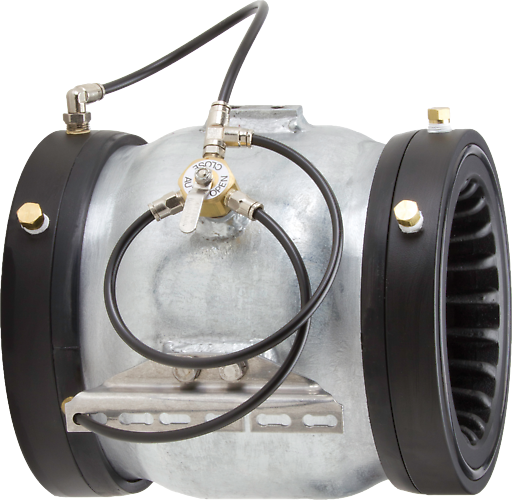Efficient Control Valves: Key Parts for Effective System Monitoring
Efficient Control Valves: Key Parts for Effective System Monitoring
Blog Article

Maximize Power Financial Savings and Comfort With Advanced Structure Automation Controls
In the realm of contemporary style and facility administration, the assimilation of advanced building automation manages stands as a crucial development. By using the power of automation, structures can adapt, respond, and progress in means that were once unthinkable.
Power Performance Benefits
Power performance advantages can significantly reduce power consumption and operational expenses in structures. Energy-efficient systems, such as innovative structure automation controls, can optimize the usage of sources like lights, air conditioning, and heating, leading to lower power costs over time.
Furthermore, enhanced power effectiveness can prolong the life expectancy of building equipment and systems. By operating extra successfully, heating and cooling systems, light, and other structure elements experience less damage, leading to reduced upkeep and substitute expenses. Additionally, energy-efficient structures typically command higher building values and rental prices, offering lasting monetary advantages to owners.
Furthermore, power effectiveness can enhance owner comfort and productivity. Properly regulated indoor settings with optimal illumination and thermal problems create a more pleasant and favorable work space, causing improved worker satisfaction and efficiency. In general, the power effectiveness advantages connected with advanced building automation controls are diverse, incorporating price financial savings, environmental stewardship, and occupant wellness.
Boosted Convenience Control
Enhancing convenience control in building environments calls for an innovative combination of advanced automation systems for optimal owner well-being. By making use of advanced building automation controls, facilities can customize the interior setting to fulfill the details demands and preferences of passengers. control valves.
By integrating these innovative controls, buildings can not only boost comfort however additionally improve power efficiency by enhancing system procedures based on actual occupancy and use patterns. Ultimately, prioritizing owner comfort with innovative automation systems leads to a much more delightful and healthier interior environment.
Functional Performance Improvements

Moreover, the application of real-time monitoring and analytics tools makes it possible for building drivers to identify energy inefficiencies and operational abnormalities quickly. By continuously monitoring energy use patterns and system performance metrics, modifications can be made in real-time to optimize power consumption and make certain peak operational effectiveness. control valves. Additionally, integrating demand look at these guys reaction strategies right into structure automation controls can even more boost operational effectiveness by dynamically changing power usage based on grid problems and pricing signals
Indoor Climate Optimization
Reliable interior environment optimization is a fundamental aspect of building automation controls, making sure passengers' convenience and health while maximizing energy savings. By utilizing sophisticated sensors and controls, developing automation systems can constantly keep an eye on and change temperature, humidity levels, air quality, and air flow to produce an ideal indoor environment. Maintaining consistent and comfy conditions not only enhances owner satisfaction but also enhances performance and general well-being.
Indoor environment optimization likewise plays a critical duty in power effectiveness. By fine-tuning air flow, heating, and air conditioning systems based on real-time information and tenancy patterns, developing automation controls can significantly reduce power consumption - control valves. Carrying out techniques such as demand-controlled ventilation and thermal zoning can aid decrease energy waste while ensuring that each location of the building gets the necessary conditioning.

Lasting Atmosphere Development
Building automation manages not only optimize indoor environment problems for power effectiveness and passenger comfort but likewise lay the foundation for creating a sustainable setting via strategic management of resources and systems. By integrating advanced structure automation technologies, such as sensors, actuators, and intelligent software, centers can keep an eye on and change energy usage in real-time to decrease waste and decrease their carbon footprint. These systems make it possible for predictive recommended you read upkeep, determining potential concerns before they rise and enhancing equipment efficiency to enhance long life and effectiveness.
Moreover, lasting environment production prolongs past energy monitoring to include water conservation, waste decrease, and indoor air top quality enhancement. Structure automation controls can control water use, find leaks, and make certain appropriate garbage disposal methods, contributing to total sustainability efforts. In addition, by keeping track of and managing that site air flow and purification systems, these innovations boost resident health and wellness and efficiency while lowering energy usage related to heating and cooling procedures.
Conclusion
To conclude, progressed structure automation regulates offer considerable advantages in regards to energy cost savings, convenience control, functional efficiency, indoor climate optimization, and producing a lasting environment. By carrying out these controls, structures can achieve optimal performance while minimizing power intake and improving resident comfort. It is obvious that the usage of advanced automation technology is vital in boosting structure efficiency and developing an extra sustainable future.
Energy effectiveness advantages can substantially minimize energy usage and operational expenses in buildings. In general, the power effectiveness benefits connected with sophisticated building automation controls are multifaceted, including expense savings, environmental stewardship, and resident wellness.
Furthermore, integrating demand response strategies right into building automation controls can further enhance functional effectiveness by dynamically adjusting power usage based on grid conditions and rates signals.
Building automation regulates not just optimize interior climate problems for energy performance and passenger comfort yet likewise lay the foundation for developing a sustainable atmosphere with strategic administration of resources and systems.In conclusion, progressed building automation regulates offer considerable benefits in terms of power savings, comfort control, functional efficiency, interior climate optimization, and developing a sustainable setting.
Report this page